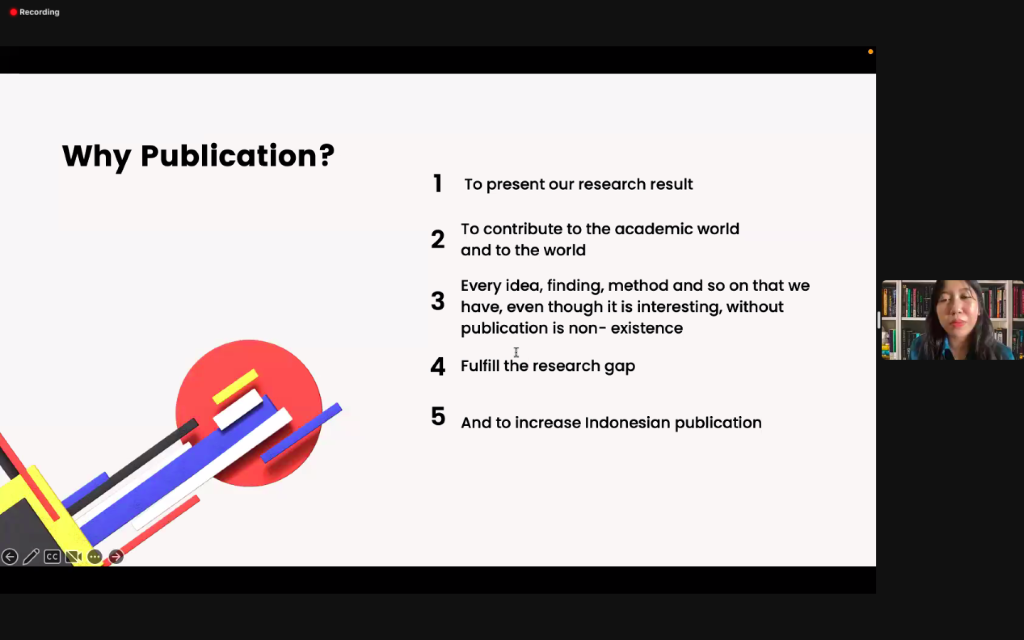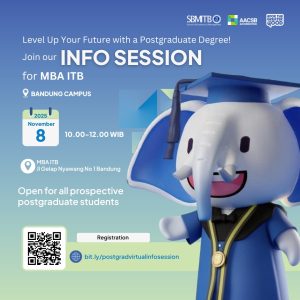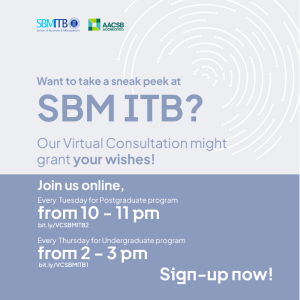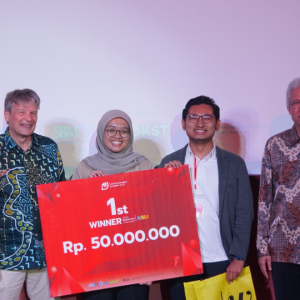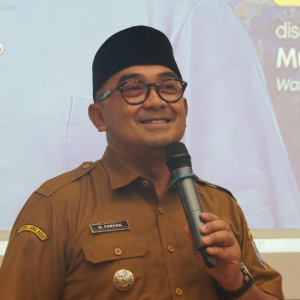One has to practice and follow the writing guidelines for their writing to be accepted by publishers. However, rejection by the publisher is not the end. We can treat rejection as a way to find what is lacking in our work. It is very helpful for evaluations.
Dr. Ambara Purusottama, MBA, a lecturer at SBM ITB conveyed this message in a knowledge sharing session entitled “Publication Strategy in the Right Journal at the Right Time” at the Master of Science and Management & Doctor of Science in Management Lounge (MSMDSM Lounge) for SBM ITB master’s and doctoral students online, Friday (10/3). Besides Ambara, Aghnia Nadhira Aliya Putri, the Project Communication Specialist at the National Center for Sustainable Transportation Technology at ITB, also attended the sharing session.
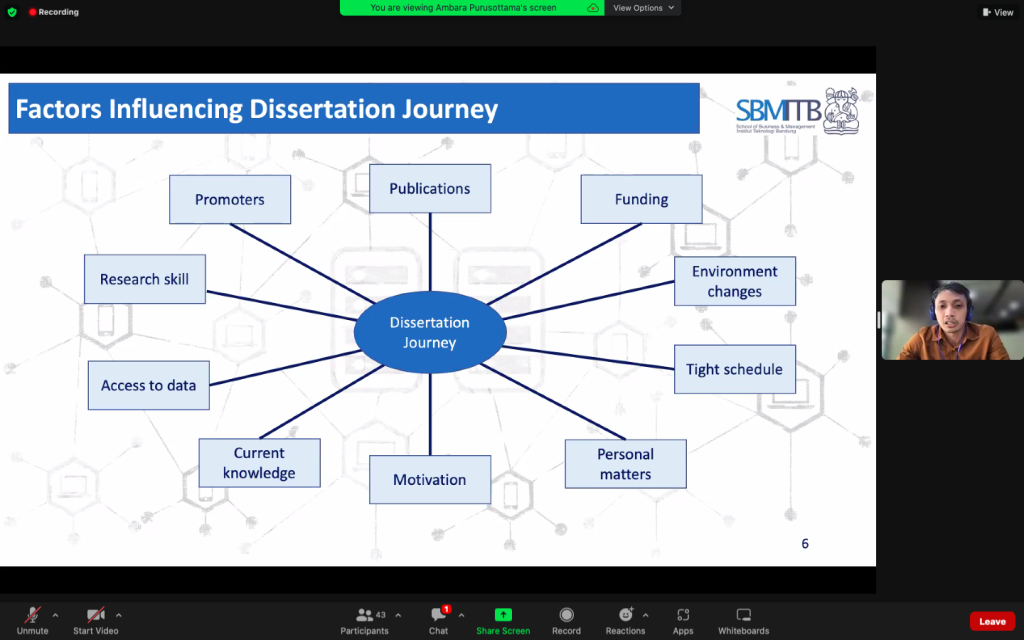
SBM ITB held this knowledge sharing because masters and doctoral students must publish paper-based research. The publication is not only a graduation requirement but also essential for developing knowledge.
Ambara stated that students must know and understand the promoter or supervisor before publishing research results. That way, students know how the promoter’s workflow works and build good coordination with them.
Furthermore, researchers often overlook this, namely, paying attention to the writing guidelines required by the publisher. Each publisher has a different template. An article with excellent research content using the latest method and providing up-to-date contribution can be rejected because the authors do not adhere to the publisher writing guidelines. Certainly, we should avoid this errors.
In addition, students also have to pay attention to time. The timeline for publication sometimes has a reasonably short span. Therefore, start writing early. Collect data early. Choose an accredited journal with a review timeline that is not too long so that our paper will be published quicker.
Meanwhile, Aghnia explained many strategies and tips how to write and publish research results. According to Aghnia, students need to publish their research. In addition to explaining research results, it can contribute to the academic world, fill research gaps, and increase Indonesian publications.
